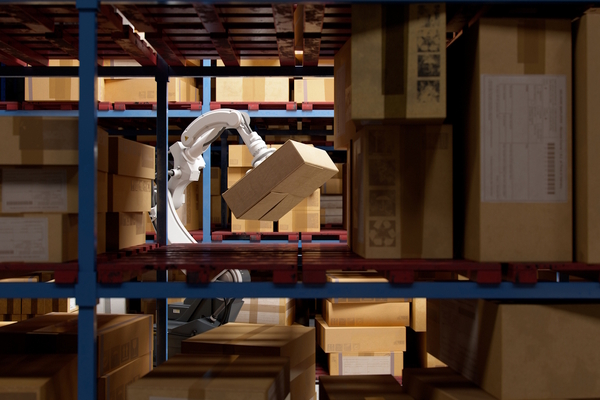Leading in the energy transition

Antonio Pietri at Aspen Technology explores the evolving role of CEOs
For decades, C suite-level executives’ main focus was on one thing – maximising performance. By ensuring that companies delivered the best possible results to customers they would reap the benefits in form of increased profitability and higher share prices.
For today’s top executives, however, business is about much more than just the bottom line.
Today, industry faces a very real dual challenge – how to meet the growing demand for resources from a growing population with increasing standards of living, while also addressing sustainability goals. Leadership, particularly from top-level executives will be key when it comes to meeting that challenge.
The urgent need for such leadership has rarely been clearer: International Energy Agency forecasts show the global demand for energy rising by 50 percent by 2050. Electricity generation is predicted to grow by 75 percent, 90 percent of which will come from renewable sources. With the growth in electrification will also come a surge in demand for key metals like lithium and cobalt.
At the same time, industry must meet critical sustainability goals, support the energy transition and decarbonisation and find solutions to waste reduction challenges. Today, for example, just 9 percent of plastic is recycled.
At the heart of those challenges is the ever-growing global population. Worldwide, UN projections estimate the population will grow by as many as 2 billion people by 2050, with some of the most rapid growth – 160 million people, or about 40 percent – coming in the middle and upper classes.
Along with that growth also comes the need to raise the standard of living for under-served populations around the globe. Today, some 770 million people worldwide do not have access to electricity, while 25 percent of the global population have no access to medicine.
Excellence is essential
Certainly, the numbers are staggering, and the challenges they represent won’t be easily overcome, but at least part of the answer starts with operational excellence.
Simply put, operational excellence and sustainability go hand in hand. From asset optimisation to energy reduction to process safety and control and more, operational excellence allows companies to stay competitive while also responding to intensifying societal and environmental pressures.
Organisations that achieve operational excellence can quickly evaluate the economic and environmental impact of different solutions, while also making companies more agile, able to rapidly embrace new business models – from hydrogen to electrification to carbon capture and storage and more – which deliver critical sustainability benefits.
Beyond those benefits, though, it also allows companies to build feedback loops into their processes as a driver for continuous evaluation and improvement in safety, sustainability and – ultimately – profitability.
If companies hope to find success in addressing the dual challenge, though, executive leadership on organisational excellence will also be required.
Investing in the talent pool of the future, building training programs, establishing best practices and learning skills – all will play a critical role in arming the evolving workforce to meet sustainability goals, to quickly adopt new technologies and to transition to new operational and business models as the world fast forwards toward a more sustainable future.
To meet those organisational excellence goals, today’s leaders need to consider a number of factors, including:
Culture and values. Leadership must provide a purpose, compelling vision and instil the values of agility and continuous improvement across their organisations. By encouraging collaboration across silos and empowering their workforce, leaders enable staff to develop the competencies and skills needed to drive change at the organisational, process and people levels.
Organisational design. The way we work has changed significantly in recent years, with new workforce expectations and an increase in remote work. It will be up to leaders to organise around these new ways of working, focused on new, balanced metrics which will be key to meeting new business objectives.
New capabilities and competencies. Identifying and ramping up new organisational capabilities – from new sustainability pathways to OT/IT to data science combined with domain experience – is critical for not only attracting and keeping a new generation of technical workers, but also for empowering them to be effective as quickly as possible.
Skills development. Companies must make sure their employees have the skills needed to work with digital solutions, both at the planning stage and as implementations are scaled up. Training will play a critical role in ensuring staff are able to maximise the usage – and therefore impact – of digital solutions, as well as sustaining value across product lifecycles.
Change management. Change is an inevitable part of any business. Whether it’s the implementation of a new technology or a worldwide pandemic forcing employees to work from home on short notice, organisations must be ready for change, and have processes which allow for solutions to be deployed at scale to ensure business impact.
Disruption is crucial
This much is clear - addressing climate change and sustainability is one of the biggest issues humanity has faced.
Executive leadership must be proactive in tackling these problems and that means disrupting internal processes, making determined and coordinated commitments to reducing carbon emissions and empowering employees to embrace new technology that can deliver climate change improvements.
While initiatives like carbon capture, emissions tracking and automation are crucial foundations for achieving sustainability goals, it’s important to recognise that technology and innovation cannot get the job done in isolation.
Ultimately, courageous leadership coupled with organisational excellence will make the difference between simply “meeting” sustainability goals and sustaining those outcomes over time. That ability to incorporate sustainability into the core values and culture of a company is what will separate the leaders of the sustainability race from the also-rans.
The technology to achieve net zero emissions by 2050 is widely accessible, but the ability to properly apply it – the skills, expertise, competencies and, most importantly, the people – toward achieving and sustaining climate goals depends on building an intellectually-curious and diverse business that maximises its people to the best of their abilities.
Every moment that passes without the requisite organisational changes is an opportunity lost to competitors, and more importantly to the future. We cannot wait for others to tell us what’s going to happen – we must decide that.
Across the industrial sector, senior leaders have a key role to play in identifying the priorities and strategies that will position their companies and people for a sustainable future for the benefit of the communities they serve and the global community as a whole.
Antonio Pietri is President and CEO at Aspen Technology
Main image courtesy of iStockPhoto.com

Business Reporter Team
Most Viewed
23-29 Hendon Lane, London, N3 1RT
23-29 Hendon Lane, London, N3 1RT
020 8349 4363
© 2024, Lyonsdown Limited. Business Reporter® is a registered trademark of Lyonsdown Ltd. VAT registration number: 830519543





